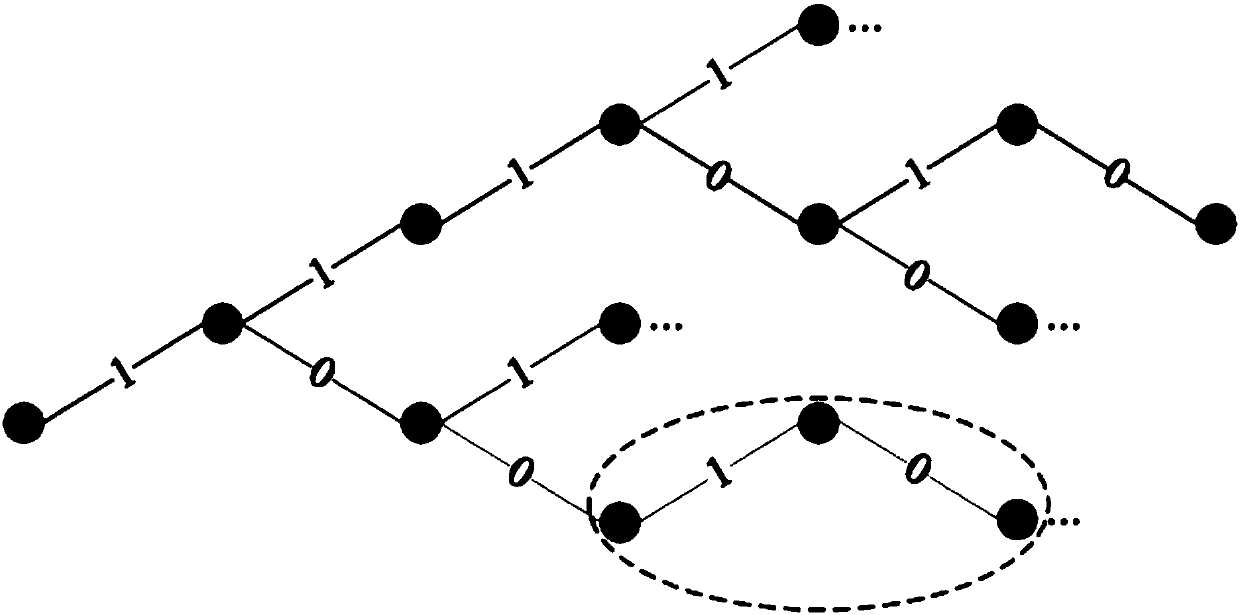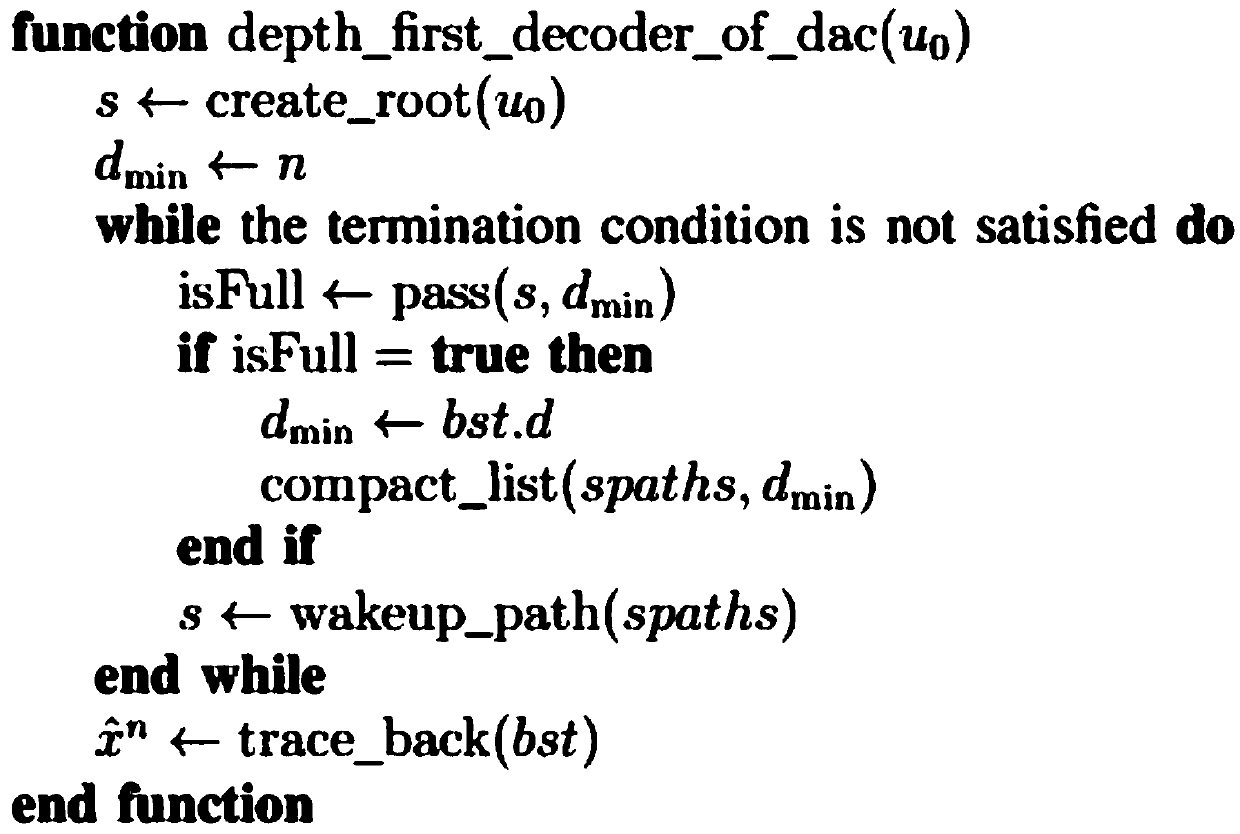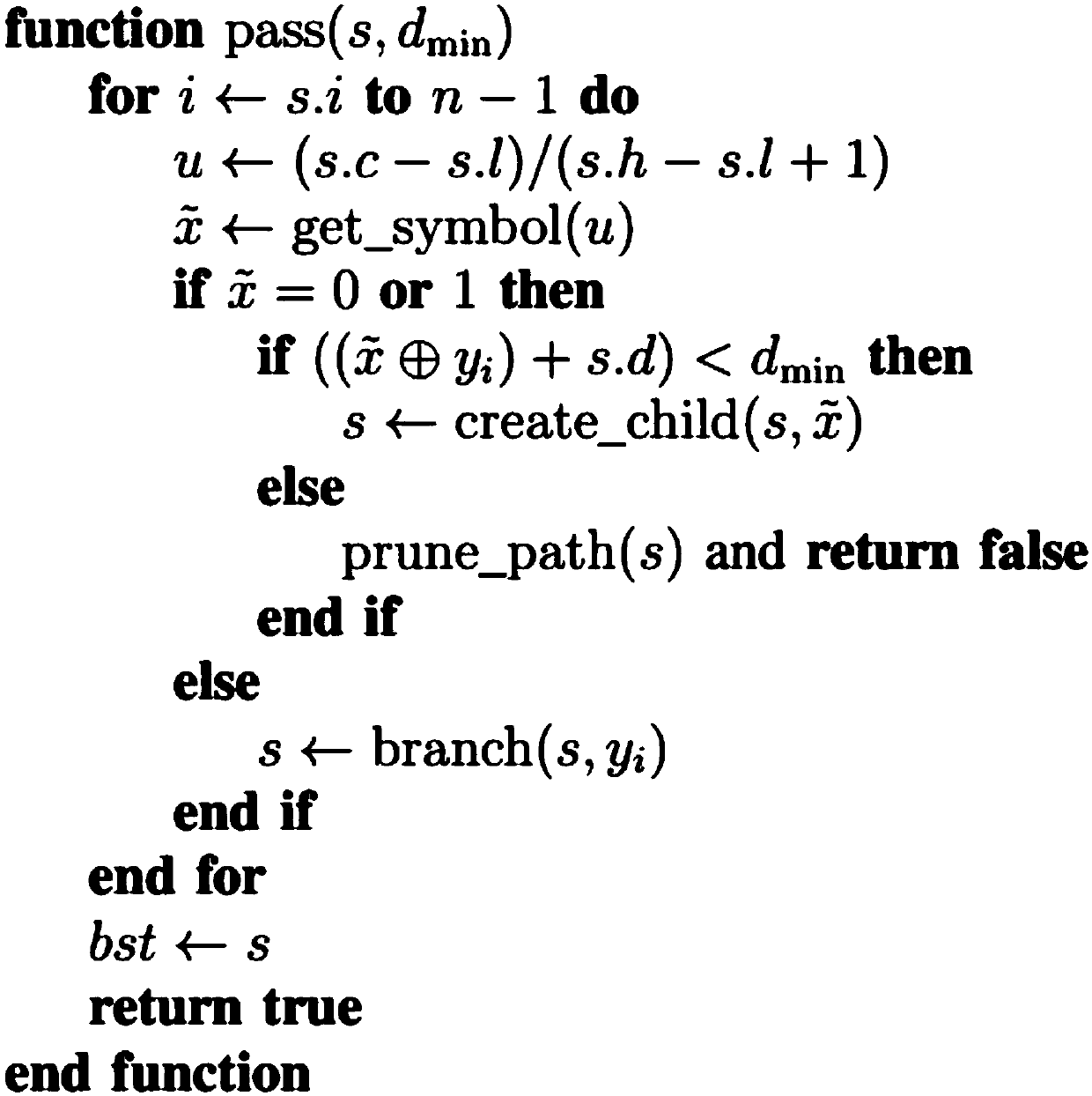Distributed arithmetic code decoding method based on depth-first
A depth-first, decoding method technology, applied in the field of distributed arithmetic code decoding based on depth-first, can solve problems such as waste of resources
- Summary
- Abstract
- Description
- Claims
- Application Information
AI Technical Summary
Problems solved by technology
Method used
Image
Examples
Embodiment Construction
[0037] The technical solution of the present invention will be described in further detail below in conjunction with the accompanying drawings and specific embodiments.
[0038] Principle of distributed arithmetic code decoding based on depth first
[0039] Depth-first decoding decomposes distributed arithmetic code decoding into a pass-through process, starting from some non-leaf nodes (only initially from the root node) and usually ending at a leaf node. While passing through each fork node, the decoder always chooses the most probable, i.e., child node with the greater overall metric, while storing another node in the list. We call the path ending at the end of the stored child node paused. In this way, the action of selecting storage is repeated until a leaf node is reached or some termination conditions are met. This whole process is called a transfer. Then, the decoder chooses the best, i.e., the paused path with the largest total metric from the list of paused paths t...
PUM
 Login to View More
Login to View More Abstract
Description
Claims
Application Information
 Login to View More
Login to View More - R&D
- Intellectual Property
- Life Sciences
- Materials
- Tech Scout
- Unparalleled Data Quality
- Higher Quality Content
- 60% Fewer Hallucinations
Browse by: Latest US Patents, China's latest patents, Technical Efficacy Thesaurus, Application Domain, Technology Topic, Popular Technical Reports.
© 2025 PatSnap. All rights reserved.Legal|Privacy policy|Modern Slavery Act Transparency Statement|Sitemap|About US| Contact US: help@patsnap.com



